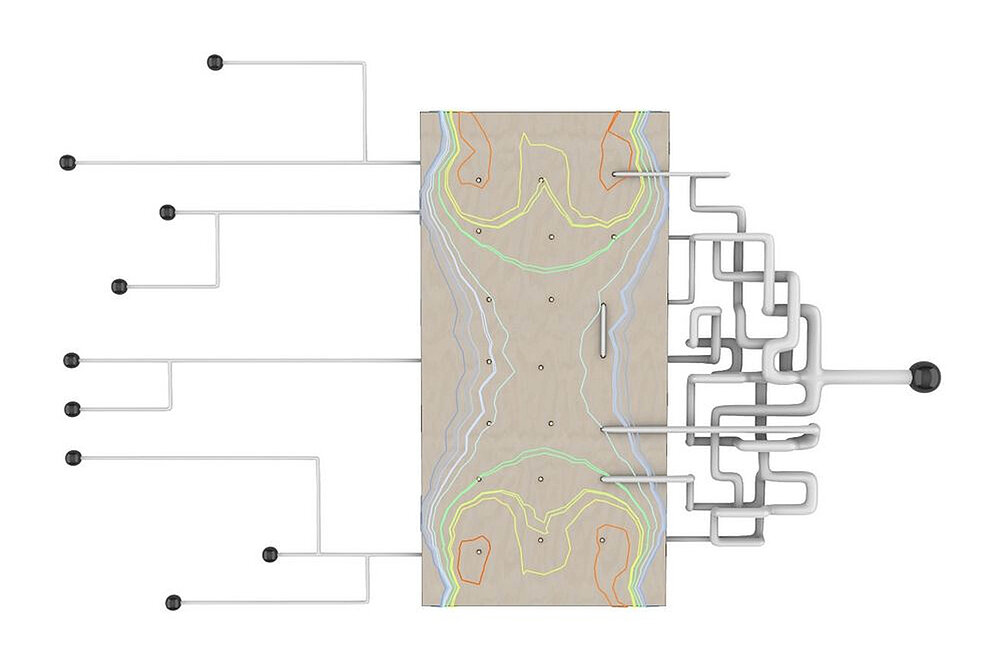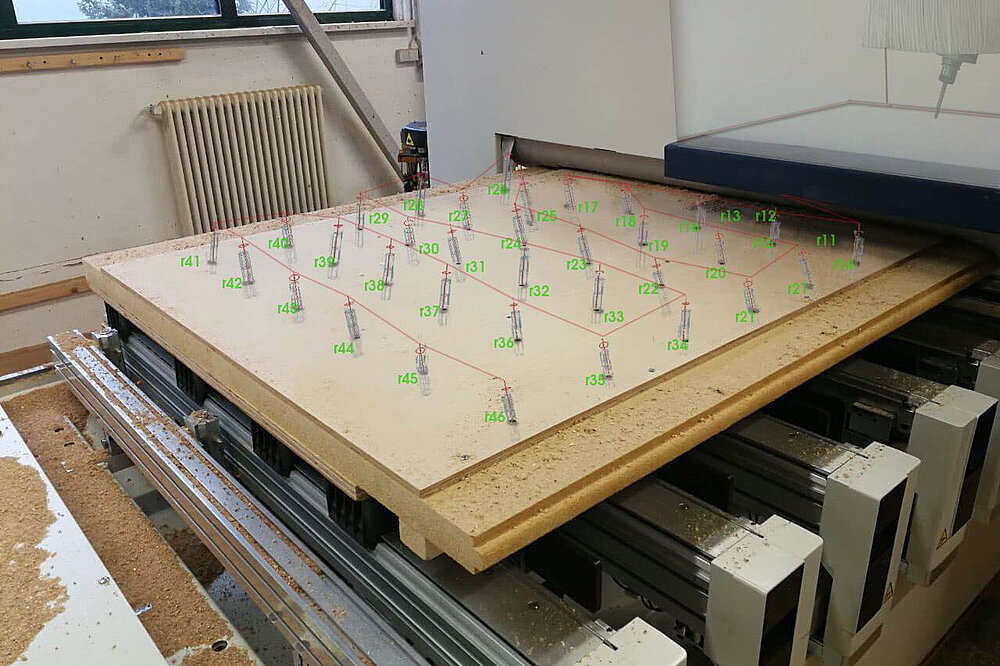The subsequent project addresses the topic of climate-friendly, resource-efficient and mono-material wall construction with wood components, based on an open system approach (parametric modeling) that allows for individuality and, at the same time, ensures economically-efficient working. In the core of the process the study investigates to which extent laminated veneer lumber panels can be spaced and simultaneously connected by means of beech dowels.
The relationships between the position and alignment determining parameters are expressed in specific dowel formations. These are made visible and examined in relation to their load bearing capacity. The load-affine dowel positioning required to reduce material consumption follows bionic principles and specifically exploits the potential of contemporary wood-based materials. However, this innvoation is associated with very complex design and planning processes, which still stand in the way of a transfer to a competitive solution. One possible approach to this challenge lies in automating the design and planning methods of the complex construction system associated with the construction method. This requires the development and testing of digitally assisted decision-making using machine learning to infer suitable partial solutions and subsequently assembling the desired structure from the results.
Keywords: Artificial Intelligence, AI, Timber Construction, Sustainability, Digital Fabrication, Design, Automation, Dowels



